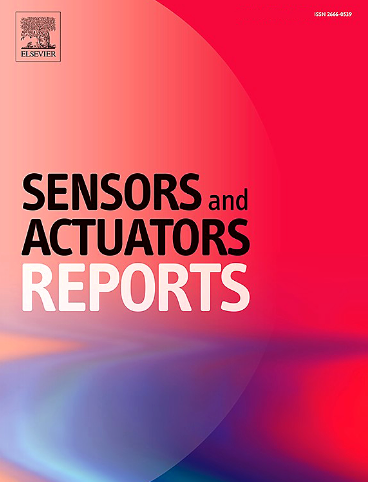用于定量检测皮质醇和人类生长激素的低成本阻抗生物传感器的开发
IF 7.6
Q1 BIOTECHNOLOGY & APPLIED MICROBIOLOGY
引用次数: 0
摘要
皮质醇和人类生长激素可以作为下丘脑-垂体-肾上腺轴反应的可靠生物标志物。下丘脑-垂体-肾上腺轴是复杂的,依赖于许多因素。然而,一般来说,皮质醇的增加是下丘脑-垂体-肾上腺轴对外部压力源的生理反应。生长激素也受下丘脑-垂体-肾上腺轴调控,由垂体前叶分泌。因此,用于量化皮质醇和生长激素的即时感应装置将用于诊断下丘脑-垂体-肾上腺轴的活性。压力指标的实际用途是多种多样的,包括医疗和制药部门以及体育和表演。因此,本工作讨论了两种电化学生物传感器的发展,旨在准确检测和量化皮质醇和生长激素浓度水平,具有潜在的实际应用价值。该装置依赖于当皮质醇和生长激素通过抗体-抗原结合固定在电极表面时产生的阻抗值。金(Au, 111)载片电极和廉价的丝网印刷金电极传感器生物芯片均获得了校正数据,其阻抗与皮质醇浓度之间存在很强的相关性,金(111)平台的检测范围为30-300 ng/mL,金(111)平台的检测范围为60 - 360 ng/mL,而重组人生长激素的检测范围为5-30 ng/mL。本文章由计算机程序翻译,如有差异,请以英文原文为准。

Development of low-cost impedimetric biosensors for the quantitative detection of cortisol and the human growth hormone
Cortisol and human growth hormone can be used as reliable biomarkers for the response of the hypothalamus-pituitary-adrenal axis. The hypothalamus-pituitary-adrenal axis is complex and dependent on many factors. However, generally, increased cortisol production is the hypothalamus-pituitary-adrenal axis's physiological response to an external stressor. Growth hormone is also regulated through the hypothalamus-pituitary-adrenal axis and secreted from the anterior pituitary gland. Hence point-of-care sensing devices for the quantification of cortisol and growth hormone would be versatile for the diagnosis of hypothalamus-pituitary-adrenal axis activity. The practical uses for a stress indicator would be diverse, inclusive of the medical and pharmaceutical sectors as well as sports and performance. Therefore, this work discusses the development of two electrochemical biosensors, designed to accurately detect and quantify cortisol and growth hormone concentration levels with potential practical applications. The device relies on impedance values which are produced when cortisol and growth hormone are immobilized onto electrode surfaces through antibody-antigen bonding. Calibration data was achieved for both Gold (Au, 111) slide electrodes and inexpensive screen-printed gold electrode-based sensor biochips with a strong correlation between impedance and concentration of cortisol, with detection range 30–300 ng/mL for Au (111) platform and 60 – 360 ng/mL for screen-printed gold electrode platform, while recombinant human growth hormone detection range was observed 5–30 ng/mL using both Au (111) platform, and screen-printed gold electrode platform.
求助全文
通过发布文献求助,成功后即可免费获取论文全文。
去求助
来源期刊

Sensors and Actuators Reports
Multiple-
CiteScore
9.60
自引率
0.00%
发文量
60
审稿时长
49 days
期刊介绍:
Sensors and Actuators Reports is a peer-reviewed open access journal launched out from the Sensors and Actuators journal family. Sensors and Actuators Reports is dedicated to publishing new and original works in the field of all type of sensors and actuators, including bio-, chemical-, physical-, and nano- sensors and actuators, which demonstrates significant progress beyond the current state of the art. The journal regularly publishes original research papers, reviews, and short communications.
For research papers and short communications, the journal aims to publish the new and original work supported by experimental results and as such purely theoretical works are not accepted.
 求助内容:
求助内容: 应助结果提醒方式:
应助结果提醒方式:


